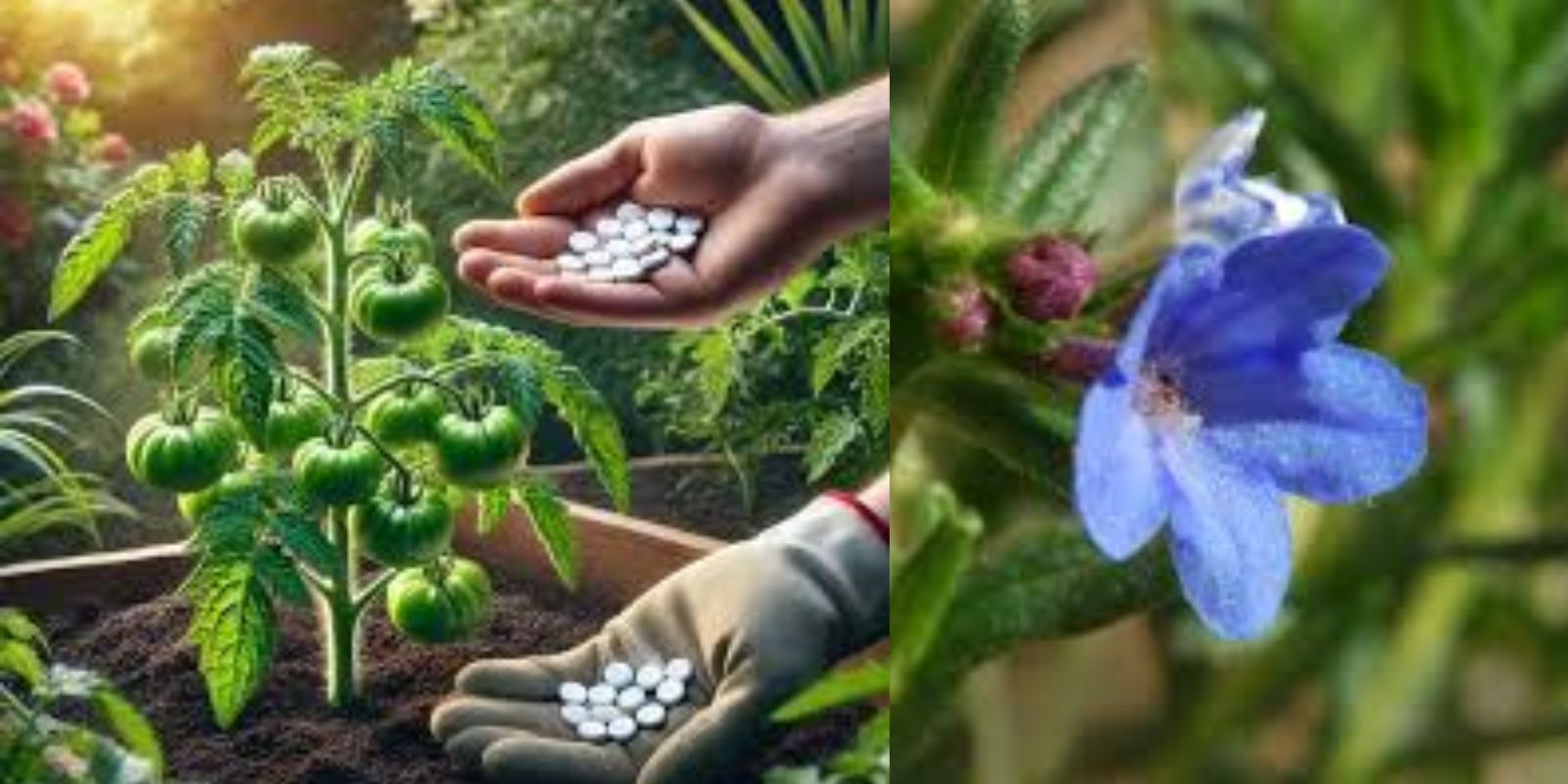If you’re a plant lover or an aspiring gardener, the dream of having a vibrant, blooming garden is probably on your wish list. While there are countless tips and tricks for nurturing plants, one method stands out as a game-changer for its simplicity and effectiveness: using a single aspirin pill to revitalize and encourage blooms in your flowering plants. Yes, that little pill in your medicine cabinet could be the key to a thriving garden!
In this article, we’ll dive into how and why this technique works, the steps to apply it, and the science behind the magic. Let’s get started on your journey to creating a blooming paradise.
Why Use Aspirin on Plants?
Aspirin, or acetylsalicylic acid, is widely known for its use in relieving pain in humans. However, its lesser-known benefits in gardening have been gaining attention. The secret lies in its active ingredient, salicylic acid. This compound, naturally found in willow bark, helps plants manage stress and improve their overall health.
Benefits of Aspirin for Plants:
- Promotes Healthy Growth: Salicylic acid stimulates photosynthesis, boosting energy production in plants.
- Increases Blooming: Regular use encourages plants to produce more flowers and maintain vibrant colors.
- Strengthens Immunity: It helps plants resist pests, diseases, and environmental stressors like drought or heat.
- Speeds Up Recovery: If your plants are wilting or stressed, aspirin can revive them quickly.
How to Use Aspirin to Make Flowers Bloom
Here’s a simple step-by-step guide to using aspirin effectively in your garden:
1. Choose the Right Aspirin
Select a plain, uncoated aspirin tablet (325 mg). Avoid flavored or coated varieties as they may contain additives that could harm your plants.
2. Prepare the Solution
- Dissolve one aspirin tablet in 1 liter (4 cups) of lukewarm water.
- Stir until the tablet completely dissolves, ensuring the solution is evenly mixed.
3. Apply the Solution
- Pour the aspirin solution at the base of your flowering plants.
- Focus on the soil around the roots rather than spraying it on the leaves to avoid residue buildup.
4. Timing Is Key
- Repeat the application every 15–20 days for consistent results.
- Apply in the early morning or late afternoon to avoid evaporation and ensure the roots absorb the solution fully.
5. Observe the Magic
Within days, you’ll notice your plants looking healthier and producing more flowers. Over time, the blooms will become more abundant and vibrant.
The Science Behind Aspirin and Plant Growth
The use of aspirin for plant care is rooted in its chemical properties. Salicylic acid plays a critical role in plant metabolism and stress response. It triggers the production of defense enzymes, which improve the plant’s ability to fight off diseases and pests.
Additionally, aspirin mimics a natural hormone in plants called jasmonic acid, which regulates growth and flowering. By introducing salicylic acid into your garden, you’re essentially giving your plants a health boost.
Tips for Maximizing Results
To ensure your plants thrive, keep these tips in mind:
- Test First: If you’re new to this method, test the aspirin solution on a small section of your garden to observe how your plants react.
- Combine with Organic Practices: While aspirin can work wonders, combining it with healthy soil, compost, and regular care will yield even better results.
- Avoid Overuse: Too much aspirin can lead to soil acidity. Stick to the recommended dosage and frequency.
- Use with Flowers: While it benefits most plants, aspirin is particularly effective for flowering plants like roses, petunias, and marigolds.
Aspirin and Other Garden Hacks
Aspirin isn’t the only surprising household item that can benefit your plants. Consider incorporating these additional hacks to elevate your gardening game:
- Banana Peels: Add potassium and phosphorous to your soil for healthy blooms.
- Coffee Grounds: Acidify the soil for plants like hydrangeas and azaleas.
- Eggshells: Provide calcium to strengthen stems and reduce blossom-end rot.
By combining aspirin with these natural remedies, you can create a powerhouse environment for your garden.
What Plants Benefit Most from Aspirin?
While aspirin is generally safe for most plants, it is particularly beneficial for:
- Roses: Encourages lush blooms and prevents fungal diseases.
- Petunias: Keeps them vibrant and blooming for longer periods.
- Tomatoes and Peppers: Enhances immunity and increases fruit yield.
- Houseplants: Revives stressed plants and promotes growth.
Common Mistakes to Avoid
- Using Coated Aspirin: Stick to plain, uncoated tablets to avoid harmful additives.
- Overwatering with Aspirin: Too much aspirin solution can overwhelm the soil and hinder plant growth.
- Ignoring Plant Needs: Aspirin is a supplement, not a replacement for proper care. Ensure your plants receive adequate sunlight, water, and nutrients.
Conclusion
Using aspirin to make your flowers bloom is a simple, affordable, and highly effective technique. Whether you’re a seasoned gardener or a beginner, this hack can transform your garden into a vibrant, blooming paradise. With just one pill, you can strengthen your plants, encourage lush blooms, and enjoy the beauty of nature at its finest.
💬 What flowers would you love to see bloom in your garden? Share your favorites and gardening tips in the comments! 🌸
#GardeningHacks #FlowerBloomSecrets #GreenThumbTips #DIYGardenIdeas #PlantCareMadeEasy

